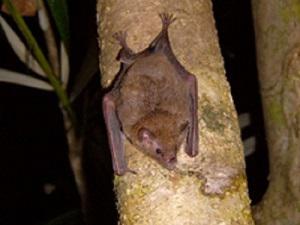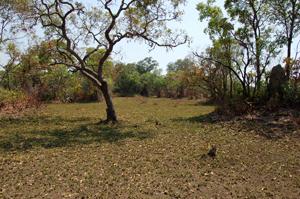Maria João Veloso da Costa Ramos Pereira
I aim to understand drivers affecting diversity and functionality of bat assemblages in the endangered Brazilian Cerrado. I will assess the effects of fragmentation onto bat richness, composition and spatio-temporal dynamics, and on the prevalence of infectious diseases. Finally, I will model changes in the provision of ecosystem services by bats and in the prevalence of diseases under future climate/socio-economic change scenarios.

Glossophaga.
The focus of my research is to understand the main drivers that affect diversity and functionality of bat assemblages in Neotropical savannas, especially regarding taxonomic and functional diversity, spatio-temporal dynamics and provisioning of ecosystem services. Neotropical savannas are seriously threatened by cultivation or grazing from livestock, but most assessments of the effects of habitat fragmentation have targeted forest bats. I will assess the effects of savanna degradation and fragmentation onto bat richness, composition and spatio-temporal dynamics, by comparing areas reflecting distinct levels of landscape transformation. Bats will be sampled using a standardized sampling design protocol of mist-netting and acoustic monitoring.

To determine the effects of fragmentation onto bat richness, composition and spatio-temporal dynamics, undisturbed habitat types will be used as controls, and replicates of sites reflecting different levels of anthropogenic land-use change will also be sampled. To understand the effects of seasonality on bat diversity, sampling will be done in two different seasons (for about two months during the dry and wet seasons), for two consecutive years (2012 and 2013). Changes in population dynamics and diversity, as a result of habitat changes, seem to influence the prevalence of infectious diseases in vertebrates, perhaps increasing outbreak risks.
Indeed, habitat fragmentation and degradation are known to reduce diversity while increasing the density of a few opportunistic species; while a host that seldom transmits its disease to a vector can dilute the disease if more competent hosts co-occur, it may become the main source of the infection if it is the most competent host present. To test the applicability of this “dilution effect” I intend to estimate virus prevalence in savannas with distinct levels of fragmentation and degradation, through molecular analyses done on faecal samples collected from all the bats caught during the field work.
Environmental features will be used as explanatory variables to predict species distribution, assemblage composition and viral load, allowing predictions of bat diversity under scenarios of change, and the development of management efforts to maximize that diversity.